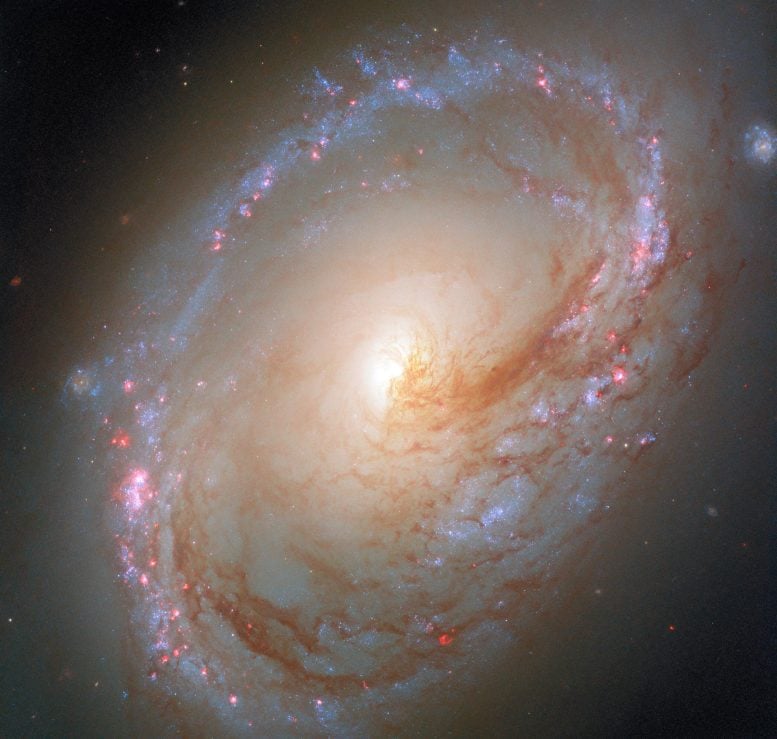
Messier 96, a spiral galaxy 35 million light-years away, shines with a lopsided beauty shaped by cosmic forces.
Its uneven arms, displaced core, and scattered gas clouds hint at gravitational struggles with nearby galaxies.
Galactic Tug of War in Leo
This striking image from the Hubble Space Telescope showcases a galaxy with an unusual, lopsided appearance that may be the result of a cosmic struggle between neighboring galaxies. Known as Messier 96, the spiral galaxy lies about 35 million light-years away in the constellation Leo and is the brightest member of its galactic group. Astronomers believe that the gravitational influence of surrounding galaxies could explain Messier 96’s uneven arms, scattered gas and dust, and its core that sits slightly off-center.
Hubble’s Ongoing Observations of Messier 96
The galaxy’s distorted shape is vividly captured in Hubble’s newest portrait, created from ultraviolet and optical observations. This is not the first time Hubble has turned its gaze on Messier 96, with earlier images released in 2015 and 2018. Each release has built upon the last, gradually layering new details to create both a visually stunning and scientifically rich record of the galaxy.
A New Look at Star Formation
The latest image adds a new dimension to our understanding of how stars are forming within Messier 96. Bright pink clouds of gas encircle clusters of massive, young stars, outlining a glowing ring of stellar birth on the galaxy’s outer edges. Many of these newborn stars remain nestled in the very gas clouds that created them. For the first time, astronomers now have access to new data from this image that will help them explore how stars emerge from dense clouds of dust and gas, how dust alters the light we see from stars, and how the stars themselves reshape their galactic environment.
Never miss a breakthrough: Join the SciTechDaily newsletter.